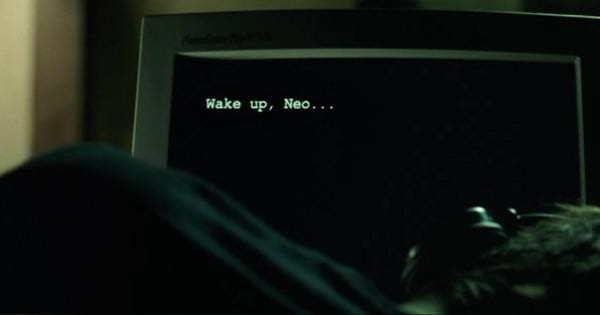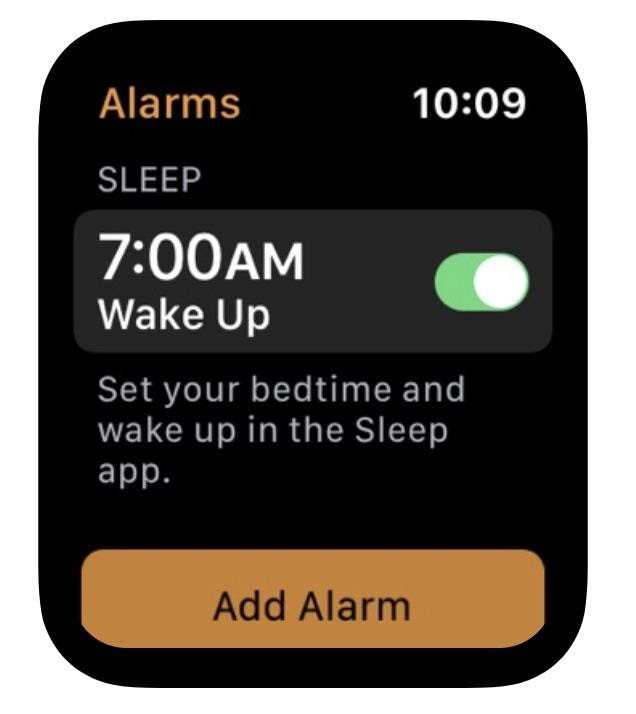
Sarmad, a software engineer at Google, has been using Sleep as Android for just over 3 years. This app has a smart alarm feature that wakes up the user in his or her lightest stage of sleep.
“I’ve found that my mornings aren’t as groggy when I use it,” says Sarmad. “With an old-fashioned alarm set at a rigid time, sometimes I’d feel jolted out of sleep and just crummy. With the app, I feel more refreshed.”
Compare this with Anna, whose obsession with her sleep tracker has actually started to interfere with her ability to get a good night’s sleep.
“I know I’m not supposed to worry about it,” she says, “but when my tracker says I didn’t sleep well the night before, I think about it as I’m going to sleep and worry I’ll have another bad night of sleep.”
Anna’s situation brings to mind what some sleep experts are calling orthosomnia, or the search for “perfect sleep” that ends up interfering with sleep quality.
These two reports reflect the current state of the sleep technology sector: the love/hate relationship users have with their devices.
On the one hand, technology is revolutionizing how we sleep, and the sleep sector has become highly profitable and much needed in the trans tech space. On the other hand, as with any developing sector, with scaling comes a number of problems and criticisms, such as the emergence of a new sleep disorder related to the ability to track one’s own sleep in real time.
In this article, we’ll unpack the recent developments in sleep technology, as well as the good, the bad, and the ugly regarding the role that technology plays in our lives — and our sleep.
The Search for the Perfect Wearable
We begin with updates in the Wearable Wars.
The release of Apple Watch Series 5 was a major disappointment for those wanting better sleep tracking capabilities. However, this isn’t keeping anyone from hoping for better in the next release, especially after GSMArena spotted a now-deleted screenshot from the Alarms app showing an unreleased app called “Sleep.”

In the text below the leaked image is a caption stating, “Set your bedtime and wake up in the Sleep App.” This accidental release has garnered a lot of attention from techies in recent weeks, especially since one of the primary criticisms of the Apple Watch has been the lack of native sleep tracking.
It appears Apple may be finally putting this criticism to bed (sorry, not sorry) with the Apple Watch Series 6.
The new capability is rumored to use movement, heart rate, and sound to track sleep quality and wake the user from his or her lightest stage of sleep, similar to third-party apps like Sleep Cycle Alarm Clock and Sleep as Android.
The app also anticipated to have a silent alarm option, which will vibrate the Apple Watch to wake the user, and will disable the alert if the user wakes before the alarm.
And don’t worry about battery life anxiety with this new function: If your Apple Watch dies in the middle of the night, the alarm will still wake you up, albeit from your iPhone.
In non-Apple news, Google announced it is acquiring Fitbit for $2.1 billion, which has users excited for sleep tracking capabilities in the Wear OS world.
Some features are going away, such as Alexa integration (no surprise there), Fitbit Premium, Fitbit Pay (to be replaced with Google Pay), and Fitbit’s own wireless earbuds called Fitbit Flyer (to be replaced with Google’s second-generation Pixel Buds).
However, readers will be happy to know that not only is Fitbit’s sleep tracking capability sticking around after the acquisition, but it is reputed that Google may be making some improvements to the already-stellar functionality.
One of the changes is rumored to include sleep app interfacing, so that users can access their sleep data on the watch itself.
However, this author anticipates that an on-screen sleep app will pose a problem for battery life, which is one of the primary reasons Fitbit has outranked OS-based smartwatches in the sleep tracking realm. Indeed, most OS-based smartwatches maintain a battery life of around 18 hours when used continuously, whereas the Fitbit Charge lasts 7–10 days before being plugged in.
Sleep technology: Love it or hate it?
Overnight battery life is not the only thing sleep tech users are losing sleep over.
As the sleep tech sector matures, a number of criticisms of the space have emerged in recent months. One of these is the collection and security of personal health data.
It should be no surprise that these devices and apps collect private data such as movement, heart rate, respiration, sounds in the room, location, etc. It is also unsurprising that these data are then used by the company to improve personalized user recommendations and the app’s overall capability.
However, concerns are arising regarding what this all means in the era of Big Data.
In an interview with Professor Deborah Lupton, author of The Quantified Self, the Irish Times quotes, “The interesting paradox is that the deeper we go into knowing ourselves, the more we expose ourselves. And what I’m finding in my research is that people aren’t thinking about this.”
While this is not a particularly new issue (fitness trackers have been criticized for years for potential data breaches exposing their users to privacy concerns), Google’s acquisition of Fitbit has users abandoning their devices for fear that the company will sell their data.
Consumers are being advised to read up on privacy policies of their sleep tech companions to become more informed of how their sleep data are being used, who has access to it, and what happens in the event of a data breach. Another way users can empower themselves is to limit what data is being collected and keep tabs on the app’s reach. For instance, if you are interested in tracking sleep using accelerometery, perhaps it isn’t necessary to allow access to your phone’s microphone.
Another criticism of sleep technology is the emergence of a new sleep problem related to the ability to track one’s own sleep data in real time. Experts are calling this orthosomnia, or the unhealthy preoccupation with getting “good sleep.”
Overall, the use of sleep trackers can increase sleep quality by making the user aware of areas for improvement. However, in some users, this increased awareness triggers stress, which can negatively impact sleep health.
Statisticians know that zooming in to a single data point, such as a night-by-night analysis of one’s sleep, results in loss of the “bigger picture.” For certain personality types, especially perfectionists, having unlimited, real-time access to fine-grained analysis is dangerous. Add to the mix that this data is often inaccurate and misleading, and you have a recipe for disaster.
Experts agree that orthosomnia is not sufficient reason to abandon sleep trackers, but that more education on data accuracy and the bigger picture of overall sleep health is necessary.
Taking wearables to the next level
Rest easy: Not all sleep technology is here to steal your slumber.
There are several new devices incorporating sleep tracking in order to improve sleep rather than simply track and report on it.
Take, for instance, the ReST Bed smart bed. The mattress contains a set of five pumps corresponding to different parts of the body as well as a pressure-sensitive layer that determine what position the user is in and adjusts the support accordingly.
The company also offers an app, which provides feedback on the user’s “sleep performance.” It is unclear what this means exactly, but it appears to involve the user’s position in bed across the sleep period.
You know when you roll over in bed and find that sweet spot and it feels like the planets have aligned? I imagine that’s what the ReST Bed is going for.
Unfortunately, not all of us can afford the $6000+ price tag for a smart mattress. Enter the smart pillow: a cost-efficient alternative to the smart bed.
The Dreampad uses intrasound to play music directly to the user via bone conduction in order to lull the user to sleep. One reviewer reports falling asleep faster with the Dreampad, but with the curious side effect of “some seriously psychedelic dreams, unlike anything I’ve ever experienced.”
A slightly less-trippy alternative is the Somnox Sleep Robot, which capitalizes on research showing that sleep is improved in infants when their breathing is synchronized to an optimal rhythm using a “breathing teddy bear.”
The device is meant to be held as though you are spooning your favorite stuffed animal. The robot then adapts to the user’s breathing pattern and emits its own breathing pattern slightly slower in order to reduce the user’s breathing rate.
The Somnox Sleep Robot also offers guided meditations, audio books, lullabies, and other sounds like heartbeat and white noise.
Finally, anyone who has sought a sleep diagnosis knows that there are many barriers and hoops to jump through. In-network sleep specialists often have waitlists of several months, and the sleep study itself requires a lot of clunky equipment and wires that make it difficult to capture a “normal” night of sleep.
The idea behind the Beddr SleepTuner device is to bring the sleep lab to you.
The Beddr SleepTuner is only slightly larger than a quarter and sticks to the forehead to measure breathing, oxygen levels, sleeping position, and heart rate. The app provides insight into the user’s sleep duration and breathing events, and offers one-on-one coaching with sleep experts to improve the user’s overall sleep quality.
This is one of the only commercial sleep devices that offers real clinical solutions in addition to sleep tracking.
The other is the THIM smart ring; however, the difference is that THIM claims to improve sleep in a fraction of the time.
You know how you get your best sleep when you’re completely exhausted from several nights of lost sleep? This is the idea behind sleep restriction therapy, one of the most widely used interventions for insomnia. The problem is that it takes a long time — and it has to get a lot worse before it gets better.
The founders of THIM thought there had to be a better way. Thus, the Intensive Sleep Retraining method was born.
The theory is that repeatedly falling asleep trains the brain to fall asleep quickly and easily. One way to achieve this is to sleep deprive a patient and simultaneously give them several opportunities to fall asleep.
The THIM ring delivers this method by lightly vibrating whenever it senses that the user has fallen asleep. The company claims they can decrease time to fall asleep by 30 minutes, increase total sleep time by more than an hour, and decrease time awake after falling asleep by 28 minutes. The device’s app also provides insights into the user’s sleep such as sleep efficiency (or the time spent sleeping relative to the time spent in bed), time taken to fall asleep, total sleep duration, and nighttime awakenings.
Whether we like it or not, sleep technology is here to stay. With increasing developments in this sector comes increased scrutiny over the role this technology plays in our health.
For some of us, the growth couldn’t happen fast enough, but for others, the challenges presented by fast growth take some time to catch up to. Overall, it appears the increased awareness of sleep issues and personal accountability for one’s health is worth the growing pains.




